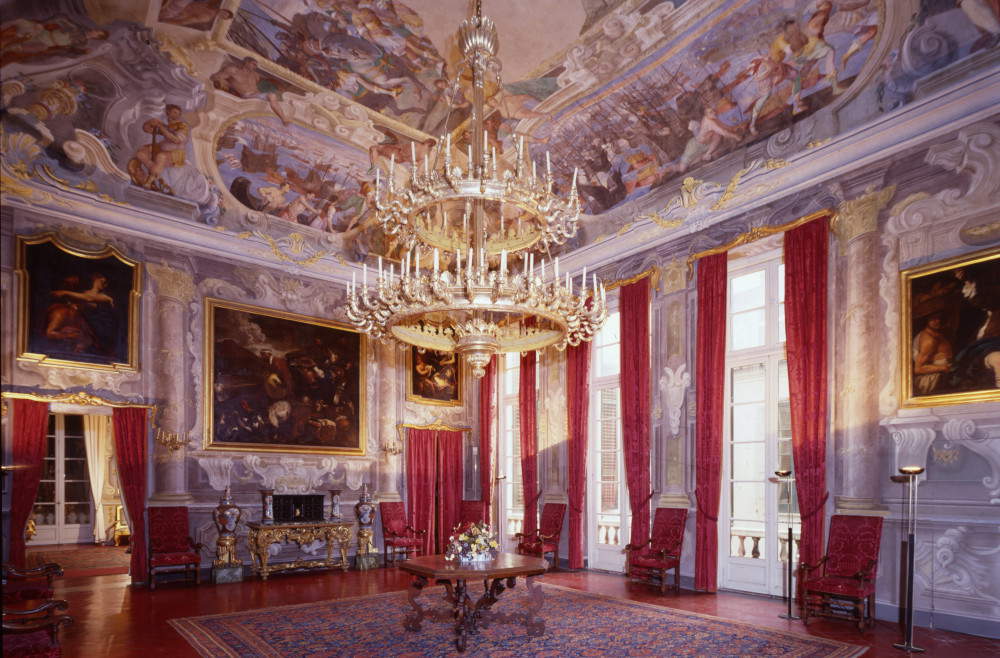From October 14 to 16 Rolli Days returns to Genoa, a not-to-be-missed opportunity to see and gain free access to the Palazzi dei Rolli, recognized as a UNESCO World Heritage Site since 2006. A series of buildings, among the most sumptuous in the city belonging to Genoa’s most prominent families, which was destined to host ambassadors, cardinals, legates, princes and sovereigns who came to visit the city. The first list, called rollo (hence the term Palazzi dei Rolli), was drawn up in 1576 and included fifty-two houses, which would grow in number with subsequent rolli (in all, five rolli were drawn up, the last of which was in 1664.
For more than a decade, the long-awaited event has been enhancing and narrating the UNESCO site Le Strade Nuove and the Sistema dei Palazzi dei Rolli, and now, after the spring edition, here is thefall 2022 edition. For the most part, the sites selected for opening will be those contained within the 1652 edition of the Rubensian volume Palazzi di Genova (first printed in 1622) where thirty-five palaces, suburban villas and city churches are located: exceptionally, twenty sites described by the drawings commissioned by Rubens will be opened in the October edition. In a journey exploring the palaces of the late 16th and 17th centuries, the monumental buildings of Via Balbi will be open to the public, from the Gallery of the Royal Palace to the University buildings; the streets of the historic center with the resounding works of art preserved in the National Gallery of Liguria in Palazzo Spinola; and the extraordinary suburban villas of Albaro and Sampierdarena accompanied by the superb Villa Pallavicino delle Peschiere. In fact, the Rolli Days will be in synergy with the major exhibition Rubens in Genoa, staged at Palazzo Ducale, produced by the City of Genoa with Fondazione Palazzo Ducale per la Cultura and curated by Nils Büttner and Anna Orlando, to celebrate the fourth centenary of the publication in Antwerp in 1622 of Pieter Paul Rubens’ famous volume. Here the artist told the world about the exceptional nature of Genoese palaces through a series of detailed illustrations of the facades, floor plans, and structure of the most important residences.
It will not only be the Rubensian sites of Genoa that will be the protagonists of the fall edition of Rolli Days: Palazzo Rosso has been renovated and refurbished, and the public will have the opportunity to visit the 18th-century Apartment of Anton Julius II Brignole Sale, which has been open to visitors for the first time for the past few weeks.
Also new for this edition will be the opportunity to visit the Fieschi Conservatory. Founded in 1763 through a testamentary bequest by Domenico Fieschi, the structure has been for years a pious lay work, able to welcome and care for girls born in Genoa who were orphaned or came from particularly poor families; even today the Foundation continues its mutualistic purpose by subsidizing young students in difficulty or more deserving through scholarships. During the visit there will be an opportunity to admire the special church, the Foundation’s picture gallery, the wonderful examples of wooden Nativity figurines from the Genoese school, and the important archives of the Fieschi family and the Conservatory itself.
Leading the tours in most of the palaces and open sites will be, as always, young science popularizers, professionals in the humanities ready to engage visitors with their enthusiasm and expertise.
In addition to the traditional guided tours, the event will be flanked by side events.
Rolli Days is an event promoted and organized by the City of Genoa in collaboration with Genoa Chamber of Commerce, Ministry of Culture - Regional Secretariat of Liguria, Association of Rolli of the Genoese Republic; University of Genoa.
For all info and to find out the program: https://www.visitgenoa.it/rollidays-online/
Photo by Municipality of Genoa








 |
| Rolli Days returns: a journey through the Rubensian places of Genoa and more. Here's what's new |
Warning: the translation into English of the original Italian article was created using automatic tools. We undertake to review all articles, but we do not guarantee the total absence of inaccuracies in the translation due to the program. You can find the original by clicking on the ITA button. If you find any mistake,please contact us.